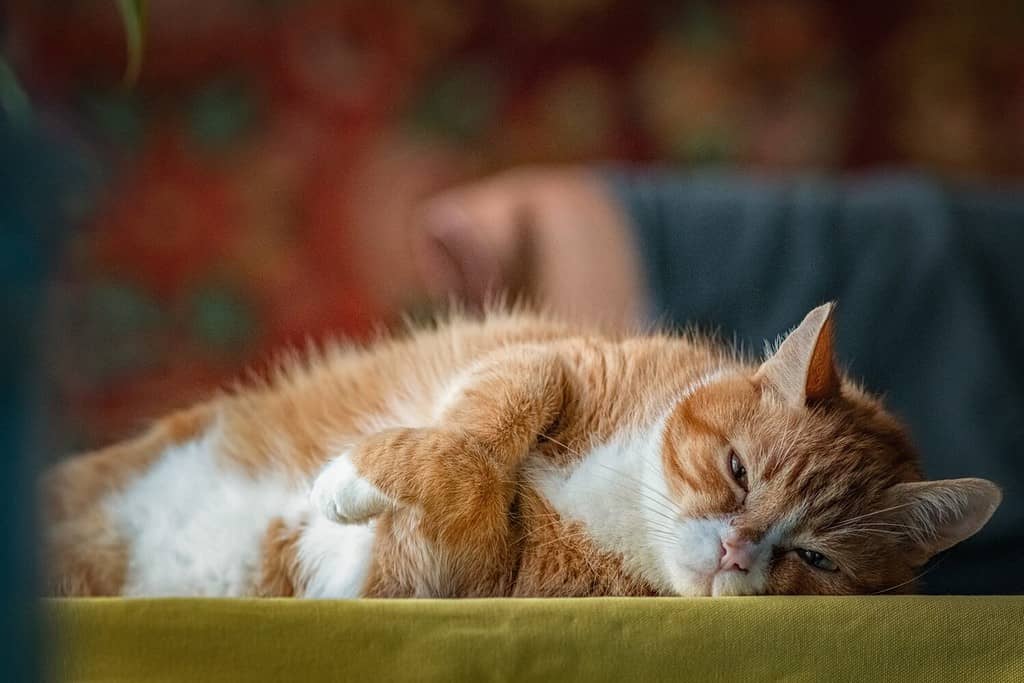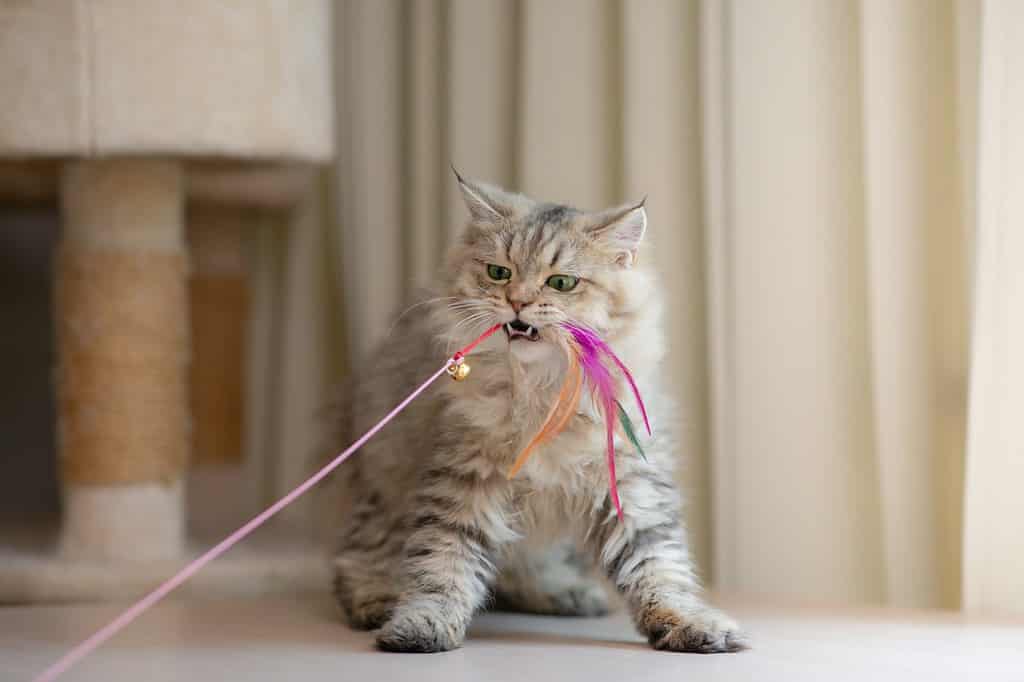If you have a small apartment and are considering adopting a cat, you might wonder how much space they really need.
Cats can be perfectly happy and healthy in small spaces, though they should always be given at least one room to explore. Utilize vertical space to make your apartment as cat-friendly as possible, and make sure to play with them daily so that they get enough exercise!
In this article, we’ll discuss how much space a cat needs to be happy and healthy, how to provide exercise and enrichment to a cat in a small space, and more.
What Does a Cat Need in Their Space?

Cats don’t need a lot of space to be happy and healthy, but they do need to be able to jump, climb, and play.
©shymar27/Shutterstock.com
To help you picture how much space your cat needs, let’s talk about the items you’ll need to fit within their space. These include:
- A water and food dish. Cats don’t tend to like drinking where they eat, so you’ll want these in separate areas, such as different sides of a room. You’ll also want to food and water away from the litter boxes.
- Litter boxes. While some cats are okay using a single box, especially in a small space, the general recommendation is one litter box per cat, plus one. This means that your single cat should have two litter boxes. These should be kept in different corners or, when possible, in different rooms. The places your cat spends the most time are the best places to put their litter boxes.
- Scratchers. It’s best to have at least one vertical and one horizontal scratcher, at least until you learn which your cat prefers using. They should be at least as long or tall as your cat’s body, with their legs completely stretched out.
- Toys. Most cat toys don’t take up a lot of space, but you will want to keep some out for them to play with! You’ll also want a place to store things like wand toys, which should be out of reach when not in use.
- Places to climb. While we’ll discuss this more later on, it’s important to provide vertical space for your cat as well!
The Importance of Vertical Space
One reason that cats can live in small spaces is that they utilize vertical space more than dogs. Keeping a cat happy in a small apartment is possible so long as they have space to run and play and things to climb.
Cat trees are a great solution, but they may not be enough in a tiny space. Or, you may not have room for a large one!
You can also try organizing your existing furniture so it’s safe to climb and gives your cat more space. For instance, you could put a cat bed on top of your bookshelf or clear the top of your dresser to make more running space.
Cat shelves are another way to add space for your cat without taking up room on the floor. There are beautiful, expensive sets out there that contain beds, hammocks, little bridges to go over your doorway, and more. But you can also DIY some nice shelves using wood from the hardware store, carpet scraps, and other cheap or free materials.
Exercise and Enrichment

Providing enrichment for your cat will keep them healthy and active, even in a small apartment.
©ANURAK PONGPATIMET/Shutterstock.com
Luckily, cats are small–so they can run quite a bit, even in a small space! Encouraging them to use vertical space during play gives them even more opportunity to tire themselves out.
Here are some enrichment ideas for cats in small spaces:
- Play with them daily. All cats need hands-on, daily play! Try to play for ten to fifteen minutes two to three times a day.
- Adopt another feline companion. For a social animal, the best enrichment is a friend of the same species. If you can swing it, the cats will provide one another with play and socialization and can even help teach each other manners.
- Set up a window seat. A bird feeder outside the window and a cozy bed on the windowsill are perfect!
- Avoid unsupervised outdoor time–try harness training instead! Outdoor cats face many risks to their lives, including disease, cat fights, predators, and cars. They live shorter lifespans and often die tragic deaths.
While it can be tempting to let your cat free-roam outside to give them more space, it’s better for their health and safety to use a harness and leash. Cats can learn to go on walks much like dogs, though they typically want to sniff around in a small space rather than walk around the block!
The photo featured at the top of this post is © Tatyana Soares/Shutterstock.com
Thank you for reading! Have some feedback for us? Contact the AZ Animals editorial team.







